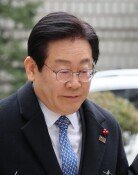[Editorial] Time for a New Export Drive
[Editorial] Time for a New Export Drive
Posted December. 09, 2008 07:45,
Korea this year has become the 11th country to post annual exports of 400 billion U.S. dollars. Given that the countrys exports broke 100 million dollars in 1964, export volume has increased 4,000 times in 44 years. Korea expanded its exports from 100 billion dollars in 1995 to 400 billion dollars just 13 years later, faster than the average period taken by advanced countries (17.2 years). This is a feat done by the sweat and tears of Korean exporters, who dedicated their youth to selling Made in Korea products throughout the world.
Despite that the Park Chung-hee administrations strong export drive in the 1970s caused side effects, such as an imbalanced distribution of financial resources, it was the stepping stone that allowed Korea to join the ranks of the worlds top 10 economies. With a lack of natural resources and original technologies, dollars earned from exports were used as seed money and played the pivotal role in expanding national wealth. Without strong exports, the Korean economy would have not been able to withstand the global financial crisis.
The outlook is far from rosy, however. Certain experts say next years export conditions will be the worst since 2001 due to the economic downturn in advanced and developing countries. Developed countries have shown signs of erecting trade barriers against major Korean export items, such as cars and semiconductors, to protect their own industries. Though Koreas export target for next year is 500 billion dollars, this might have to be slashed by more than half if the turmoil persists or worsens.
As a result of the global economic boom of the past several years, people have begun to overlook the importance of exports. It is imperative to renew Korean awareness that for Korea, which has a small and open economic system, strong exports are an essential condition for its existence and prosperity.
The government should draw up measures that stimulate exports and help Korean businesses overcome trade barriers under the new economic landscape. Major Korean export items have changed from cheap, labor-intensive products, such as shoes and textiles, to cutting-edge products of heavy and chemical industries, such as ships, cellular phones and petroleum products. Therefore, state measures to promote exports should also be upgraded. The government should help exporters to receive adequate financial assistance and at the same time, businesses should ceaselessly develop high added-value products, discover promising export items, and break into niche-markets.







